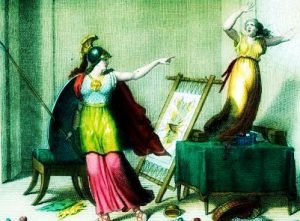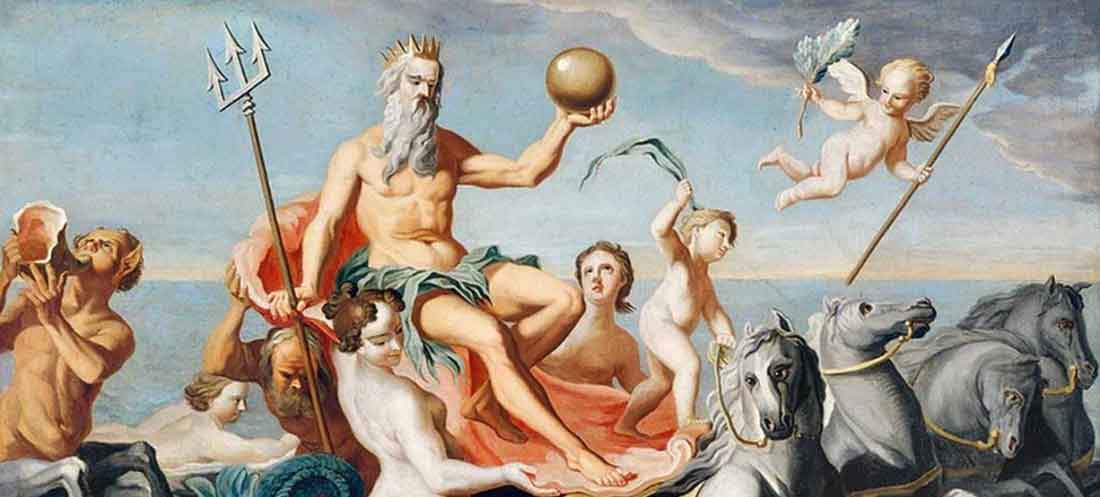The myth of Arachne in Greek Mythology
 Arachne’s origins were humble both on the part of her dyer father Idmon from Colophon and on the side of her otherwise unknown mother. The place of her origin was equally humble, “a village with five people”, writes Ovid.
Arachne’s origins were humble both on the part of her dyer father Idmon from Colophon and on the side of her otherwise unknown mother. The place of her origin was equally humble, “a village with five people”, writes Ovid.
But she was very skilled in the art of weaving, so much so that the Nymphs from Mount Tmolos and the river Pactolos would leave their places of pleasure and go to the Spider to admire her handiwork, both the final result and the process leading up to it, especially her fingers. She was so skilled that people began to say that Athena was her teacher.
The Spider’s haughty confidence led her to challenge Athena to a weaving contest. The goddess gave her a chance, to repent of her unwise words. She disguised herself as an old woman and appeared before the Spider. The advice he gave her to change her behavior infuriated the young woman, who even went so far as to attempt to physically assault the old woman.
Athena was revealed, but the new one insisted on her primacy. The contest has begun. The two weavers used threads based on the color purple and its very subtle shades.
Athena depicted the gods in all their glory, at the time when Athena and Poseidon were fighting for the name of their country Cecrops. And to wise up the Spider even at the last moment, in the four corners of the loom he depicted people severely punished by the gods for their arrogance.
Athena also depicted Aimos and Rhodope whom the gods stoned in mountains, because, though mortal, they thought they could resemble, be like Zeus and Hera, the queen of the Pygmies whom Hera transformed into a crane that he was fighting his people, Antigone of Troy whom Hera, for her thoughtless courage, transformed into a bird, into a stork; Kinyras who mourns incessantly for his daughters.
Athena completed her tapestry by spreading olive branches around its edges as a decorative pattern.
For her part, Arachne represented in the fabric the adventures of the gods, especially Zeus, with Europa, Asterii, Leda, Antiope, Alcmene, Aegina, Mnemosyne, Danae, etc., and his transformations into bull, eagle, swan, satyr, golden rain, shepherd, snake, etc.
But also of Poseidon who also changed forms, in order to unite with virgin daughters; he became a bull, a ram, a river, a horse, a winged vulture, a dolphin, a hawk, a lion, a shepherd, etc. A total of twenty-two cases of divine disguises and impersonations were depicted by the Spider, whose purpose was to seduce mortal women. The Spider, like Athena, decorated the fabric around with flowers and ivy leaves.
The perfection of the weaving but also the offensive to the gods choice of subjects, the artistic innovations of the girl with the violation of the classical principle of balance and the balanced depiction of the disorder caused by the renunciation of the divine identity by the gods themselves, without depriving their power, they provoked the wrath of Athena who, out of envy for the work of her mortal rival, destroyed the weaving and began to beat the girl with the shuttle of the loom.
The young woman, in her agony, wanted to hang herself, the goddess took pity on her, gave her life but condemned her to live forever hanging like that, she and her descendants and with their bellies, not with their hands, to weave the their tissue
